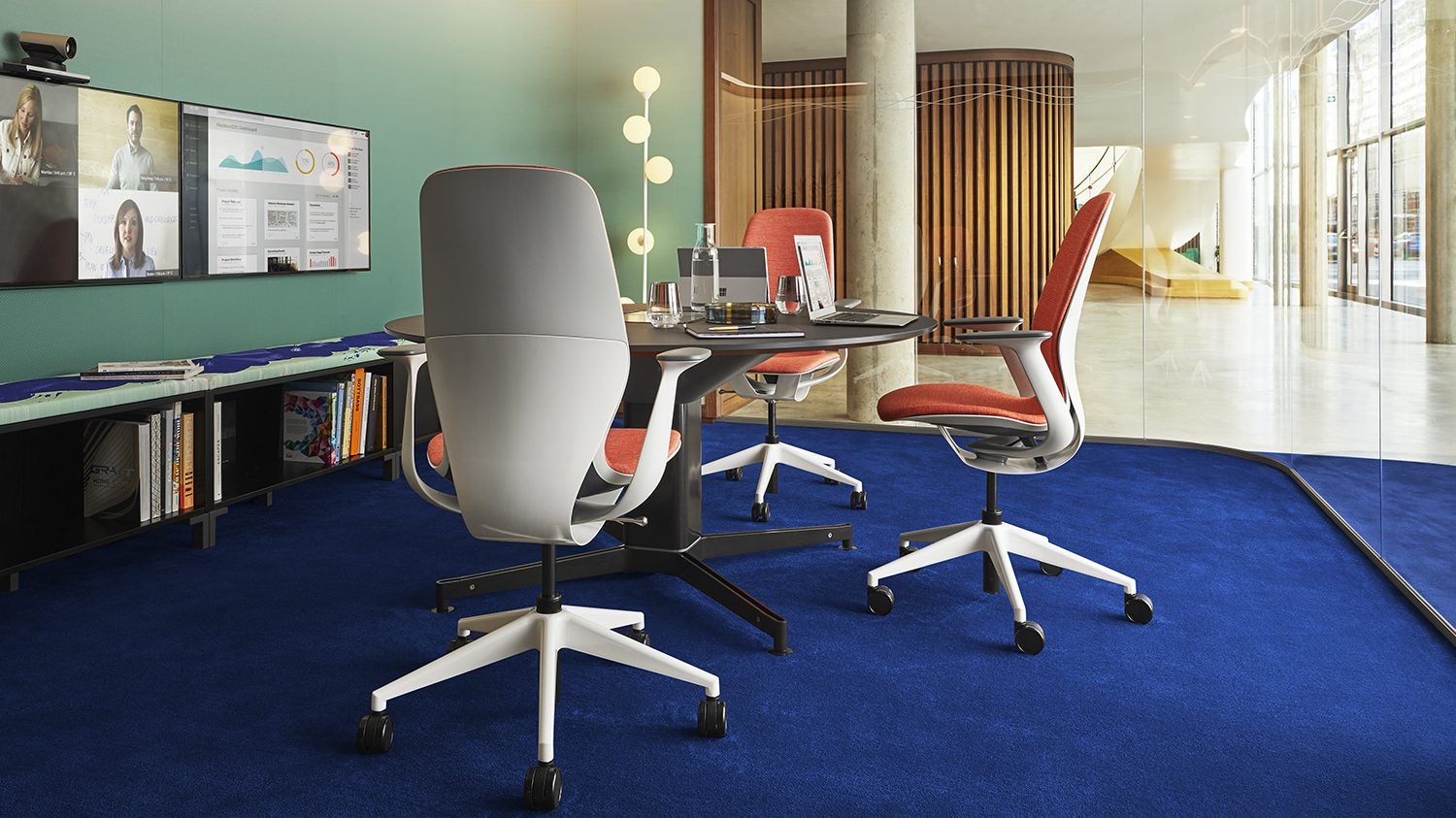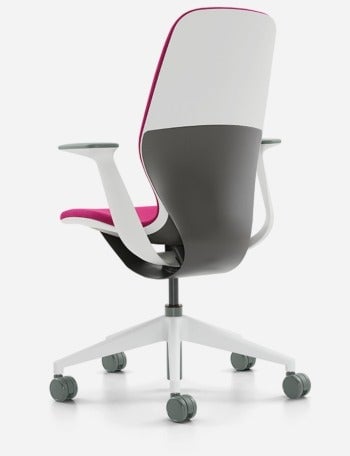This could be the next great office chair
With extraordinary fanfare, furniture giant Steelcase unveiled SILQ, an ultra sleek, new office chair designed to instantly adapt to a sitter’s body movements without fiddling with knobs and levers. The world’s largest office furniture manufacturer believes that it’s finally arrived at an answer to Herman Miller’s legendary Aeron chair, which is still the most popular model in the market today.


With extraordinary fanfare, furniture giant Steelcase unveiled SILQ, an ultra sleek, new office chair designed to instantly adapt to a sitter’s body movements without fiddling with knobs and levers. The world’s largest office furniture manufacturer believes that it’s finally arrived at an answer to Herman Miller’s legendary Aeron chair, which is still the most popular model in the market today.
SILQ is a counterpoint to the gadgety Aeron chair. When Herman Miller launched Aeron in 1994, the world was dazzled by the “true machine for sitting,” where users can make numerous adjustments to suit one’s body type. It was even sold in three sizes to best suit the owner’s height and weight. Designed with a distinctive see-through textile called pellicle stretched over the frame, the Aeron chair launched a pervasive obsession with individualized office ergonomics.
Steelcase thinks it’s time to rethink this model.
SILQ’s innovation is nearly imperceptible—and that’s by design explains James Ludwig, the head of global design and product engineering at Steelcase, whose headquarters are in Grand Rapids, Michigan. “I think chairs are a kind of archaeological artifact. It reflects our time. [This] is about this idea of technological advance and the weariness we’re having with the complexity of our world,” says Ludwig who had been mulling an ultra-responsive task chair since 2008.

The mania over user-controlled customization has led designers to pack in more features into more types of chairs, observes Ludwig. This is evident in the many levers for varying heights, angles and lumbar depth found in many office chair today. “The adjustability became more and more complex because there’s feature creep in every product technology…You had to make your chair do more things to make it seem more relevant,” he explains to Quartz.
But SILQ is turning away from the hyper-customization madness. Beneath its simple frame is technology that allows the chair to respond to natural movements of the human body. It subscribes to a proven industrial design principle best exemplified by the iPhone: a deceptively simple shape engineered with features that anticipate the user’s behavior. In this case, SILQ is a kind of smart device programed to organically respond to the body.
Advances in carbon fiber technology paved the way for Steelcase’s material scientists to develop a new type of polymer that mimics extremely durable, lightweight carbon material at mass market price. SILQ is priced at $1,000, which is within the price range of other designer task chairs. The Aeron retails at $800 and Vitra’s Pacific—the office chair in Apple’s new campus—is $1,200. (These don’t account for design knockoffs, but that’s another story.)
Ludwig sees SILQ as the solution for a generation of workers no longer tethered to one desk. “Our work is atomized—it’s done in different places,” observes Ludwig who divides his time in Steelcase’s offices around the world. “Wherever you work, this chair ‘knows’ you, instead of you having to ‘know’ the chair. This chair is an acknowledgement that work has changed.”
Steelcase is hoping to tap into the $27 billion global luxury furniture market. A Nov. 2017 report compiled by Research and Markets suggests a growing global demand for high-end office furniture as companies are putting more emphasis on beautifully-designed headquarters. Research and Markets predicts that the designer office furniture market will grow by 4% over the next three years.